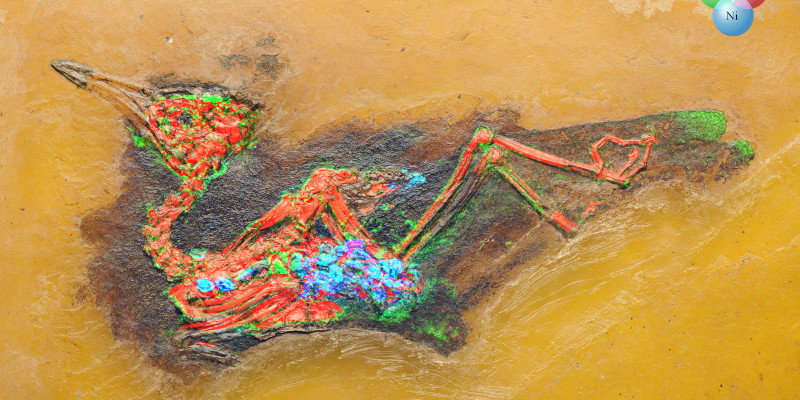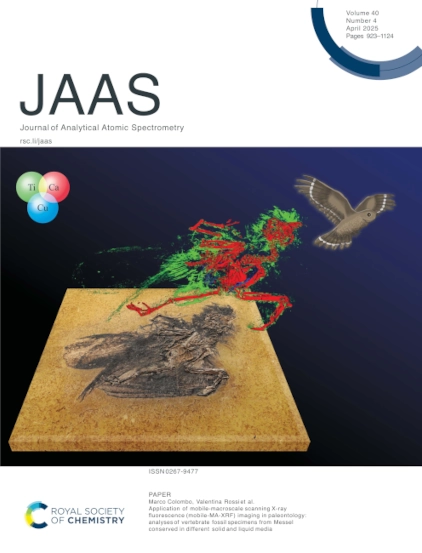In This Section
Messel fossils under X-rays: a new tool to illuminate the anatomy of fossils in museum and research collections

An international team of scientists from Ireland and Germany has applied for the first time a novel mobile X-ray imaging instrumentation on fossil animals from the Messel Pit, a UNESCO World Heritage Site near Frankfurt, Germany. The pioneering study opens up a new avenue for studying in detail the elemental chemistry of fossils conserved in both solid and liquid media in research and museum collections worldwide.
The study, published in the Journal of Analytical Atomic Spectrometry, is led by TU Darmstadt Marco Colombo and his supervisor Prof. Wolfgang Ensinger, in collaboration with paleontologists Dr Valentina Rossi and Dr Thomas Lehmann, from School of BEES, University College Cork and Senckenberg Research Institute and Natural History Museum Frankfurt, respectively.
Mr. Colombo explains, “A big challenge to study cultural heritage objects, from historical artifacts to fossils, relates to their unique and often fragile nature. As scientists, we strive to use and/or develop sophisticated non-destructive approaches to study such objects”.
Dr. Lehmann: “Messel is a world-famous fossiliferous site, where animals are exceptionally preserved, including their skin, fur, feathers, eyes and internal organs. These unique 47 million years old fossils need special care before being housed in museum collections: some, especially the larger ones, are transferred from the sediment to a resin plate, and others are kept in water or glycerin”.
The team used a powerful X-ray fluorescence spectrometer that has been acquired in the framework of a collaboration between the Technical University of Darmstadt and the Städel Museum, the Goethe University, as well as the Senckenberg Research Institute in Frankfurt, with the financial support of the Dr. Rolf M. Schwiete Foundation. Such instruments are widely used to scan historical paintings, enabling among other the discovery of preliminary sketches, artistic techniques or even forgeries. “Large and heavy fossils and those conserved in water or glycerin are difficult to study without removing the soft tissues from the specimens (i.e., destructive sampling). The use of large X-ray machines allows us to analyze these fossils safely, by positioning them on a table and scanning their chemical composition”, explains Mr. Colombo.
The team discovered striking chemical signals associated with fur, feathers and internal organs in nearly all of the analyzed fossils. This also demonstrates that all conservation methods used on the Messel fossils so far enable the preservation of their chemical composition.
“The association between chemical elements and soft tissues is critical for our understanding of fossil preservation, but also more importantly we can use chemical signals in fossils to reconstruct their biology and ecology” says senior author Dr. Rossi. “The application of cutting-edge technologies to fossil analyses can reveal previously inaccessible information, marking a significant advancement in palaeontology. This approach is crucial for expanding our understanding of ancient life and ecosystems.”
Thanks to the fast advancements in technology, paleontologists and material scientists are working together to expand their toolkit to study our ancient heritage.
The study can be downloaded here:
https://pubs.rsc.org/en/content/articlelanding/2025/ja/d4ja00310a
The article is also showcased as cover of the issue with an image showing a fossil bird from the Messel Pit illuminated by XRF spectrometry coming to life. The cover can be accessed at:
https://pubs.rsc.org/en/content/articlelanding/2025/ja/d5ja90015h

School of Biological, Earth and Environmental Sciences
An Scoil Eolaíochtaí Bitheolaíocha, Domhaneolaíocha agus Comhshaoil
Contact us
Distillery Fields, North Mall, University College Cork, Ireland , T23 TK30
